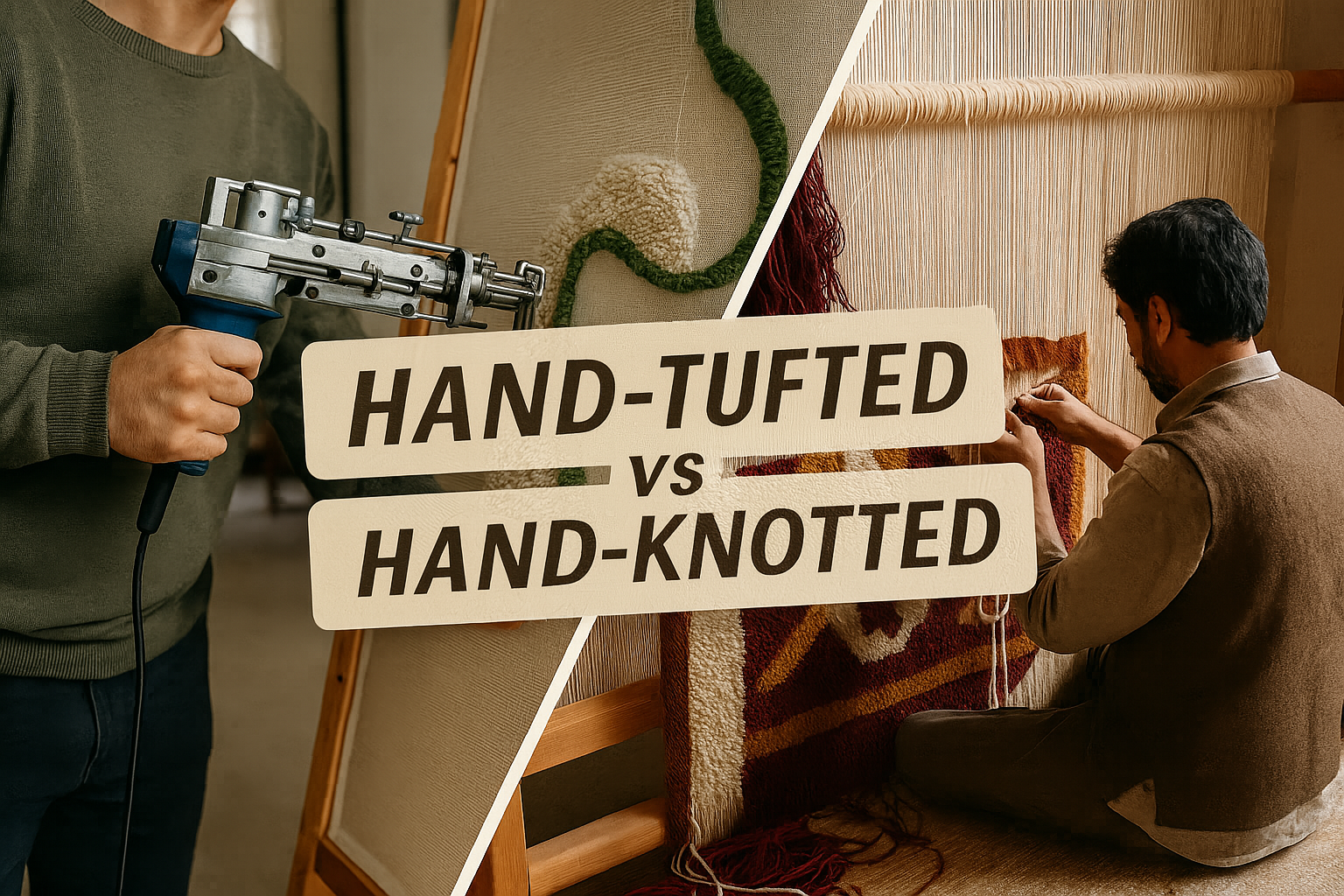Hand-Tufted vs Hand-Knotted Rugs
When choosing a handmade wool rug, many people find themselves deciding between hand-tufted and hand-knotted options. Both are crafted by skilled artisans, both offer beauty and uniqueness, but they differ significantly in terms of technique, durability, price, and purpose. This guide offers a transparent, in-depth look at the differences to help you make the right decision based on your lifestyle, space, and expectations — without bias or sales pressure.
What is a Hand-Tufted Rug?

A hand-tufted rug is created using a tufting gun — a tool that inserts loops of wool yarn through a stretched canvas. After the tufting process, the back of the rug is sealed with latex and covered with a fabric layer for support.
These rugs can replicate intricate designs similar to hand-knotted styles but are made faster and with less effort. The absence of tied knots means they are not as durable in the long term but can last between 5 to 10 years with normal home usage and basic care.
Hand-tufted rugs are known for their soft texture, plush feel, and accessibility. They are often chosen for decorative purposes, in bedrooms, living rooms, or places where softness and style matter more than heirloom longevity.
What is a Hand-Knotted Rug?

A hand-knotted rug is crafted by individually tying thousands — sometimes millions — of knots by hand on a loom. Each knot is a part of the rug’s foundation, making it extremely durable and long-lasting.
The craftsmanship involved in a hand-knotted rug is remarkable. It can take several months or even years to complete one, depending on the size and complexity of the design. These rugs often appreciate in value over time and are considered collectibles or heirlooms.
However, due to the time-intensive process and skill required, hand-knotted rugs are significantly more expensive than other types. They are best suited for buyers seeking a legacy piece — something to be passed on to the next generation or to serve as a lasting centerpiece.
Key Differences
Understanding the core differences can help clarify which rug is the better fit for your space:
- Time to Make: Hand-knotted rugs take months; hand-tufted rugs take days or weeks.
- Durability: Hand-knotted rugs can last generations; hand-tufted rugs typically last 5–10 years.
- Detail: Hand-knotted rugs can achieve finer, more precise patterns due to individual knots.
- Cost: Hand-tufted rugs are generally more affordable, while hand-knotted pieces are luxury investments.
- Maintenance: Both require care, but hand-tufted rugs are slightly easier to maintain and clean.
- Backing: Hand-knotted rugs are reversible and have no backing; hand-tufted rugs have latex/fabric backing.
Which One Should You Choose?
The choice isn’t about which rug is better, but which rug is better for you. If your home needs a warm, stylish floor layer that adds comfort and character — without the price tag or long wait — a hand-tufted rug can be a great fit. Especially in family spaces, rental homes, or evolving interiors where you may want to change styles every few years.
On the other hand, if you're seeking a long-term investment, heritage design, or want a rug that tells a generational story, a hand-knotted rug may be worth the time and cost.
Conclusion
Handmade rugs bring life and soul into a home. Whether you choose a hand-tufted or hand-knotted option, you're investing in something crafted with care, tradition, and artistry.
At Restoration and Renovation, we specialize in hand-tufted wool rugs that bridge beauty and comfort — with the kind of quality that makes your home feel lived-in and loved.
Explore our collection to discover a rug that reflects your style, your pace, and your story.

